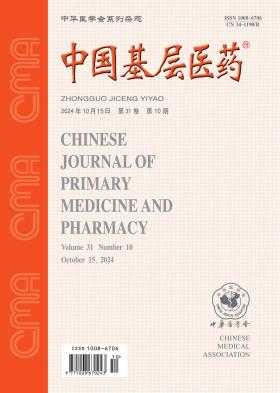Application of failure mode and effect analysis in radiotherapy and chemotherapy for breast cancer patients
引用次数: 0
Abstract
目的 探讨失效模式与效应分析(FMEA)在乳腺癌放化疗过程中的应用效果。 方法 回顾性分析温州医科大学附属第一医院2017年3月至2019年3月行放化疗的乳腺癌患者120例的临床资料,根据护理方法不同分为两组,观察组60例采用FMEA护理管理干预,对照组60例采用常规护理干预。评价两组患者干预后乳腺癌患者生命质量测定量表(FACT-B)、抑郁自评量表(SDS)及焦虑自评量表(SAS)评分情况,比较两组患者满意度、病情知晓情况,观察并发症发生情况。 结果 干预后,观察组各项生活质量评分均显著优于对照组(均P<0.05)。观察组病情知晓率、满意度分别为98.33%、95.83%,均显著高于对照组的83.33%、81.67%(χ2=8.107、5.175,均P<0.05)。观察组FACT-B、SDS、SAS评分分别为(130.26±14.42)分、(42.35±4.32)分、(38.35±4.66)分,均显著优于对照组的(112.25±8.93)分、(59.24±6.95)分、(51.42±6.23)分(t=5.236、3.236、11.865,均P<0.05)。观察组并发症发生率为11.67%,显著低于对照组的28.33%(χ2=5.208,P=0.022)。 结论 实施FMEA护理管理能有效提高乳腺癌患者放化疗过程中的生活质量,缓解患者心理和生理上的各种不适,提高患者的满意度,降低并发症发生率。失效模式及效果分析在乳腺癌患者放化疗中的应用
Objective To investigate the effect of failure mode and effect analysis (FMEA) in the process of radiotherapy and chemotherapy for breast cancer. Methods The clinical data of 120 patients with breast cancer who received radiotherapy and chemotherapy in the First Affiliated Hospital of Wenzhou Medical University from March 2017 to March 2019 were retrospectively analyzed. They were divided into two groups according to different nursing methods. The observation group (60 cases) used FMEA nursing management intervention, and the control group (60 cases) used routine nursing intervention. To evaluate the scores of breast cancer patients' quality of life measurement scale (FACT-B), self rating depression scale (SDS) and self rating anxiety scale (SAS) after intervention in the two groups, compare the patients' satisfaction, condition awareness, and observe the occurrence of complications in the two groups. After the intervention, the quality of life scores of the observation group were significantly better than those of the control group (all P<0.05). The awareness rate and satisfaction rate of the observation group were 98.33% and 95.83%, respectively, which were significantly higher than 83.33% and 81.67% of the control group( χ 2=8.107 and 5.175, both P<0.05). The FACT-B, SDS, and SAS scores of the observation group were (130.26 ± 14.42), (42.35 ± 4.32), and (38.35 ± 4.66), respectively, which were significantly better than the control group's (112.25 ± 8.93), (59.24 ± 6.95), and (51.42 ± 6.23) scores (t=5.236, 3.236, and 11.865, all P<0.05). The incidence of complications in the observation group was 11.67%, significantly lower than the 28.33% in the control group( χ 2=5.208, P=0.022). Conclusion The implementation of FMEA nursing management can effectively improve the quality of life of breast cancer patients during radiotherapy and chemotherapy, alleviate their psychological and physiological discomfort, improve their satisfaction and reduce the incidence of complications.
本文章由计算机程序翻译,如有差异,请以英文原文为准。
求助全文
约1分钟内获得全文
求助全文
来源期刊
CiteScore
0.10
自引率
0.00%
发文量
32251
期刊介绍:
Since its inception, the journal "Chinese Primary Medicine" has adhered to the development strategy of "based in China, serving the grassroots, and facing the world" as its publishing concept, reporting a large amount of the latest medical information at home and abroad, prospering the academic field of primary medicine, and is praised by readers as a medical encyclopedia that updates knowledge. It is a core journal in China's medical and health field, and its influence index (CI) ranks Q2 in China's academic journals in 2022. It was included in the American Chemical Abstracts in 2008, the World Health Organization Western Pacific Regional Medical Index (WPRIM) in 2009, and the Japan Science and Technology Agency Database (JST) and Scopus Database in 2018, and was included in the Wanfang Data-China Digital Journal Group and the China Academic Journal Comprehensive Evaluation Database.

 求助内容:
求助内容: 应助结果提醒方式:
应助结果提醒方式:


